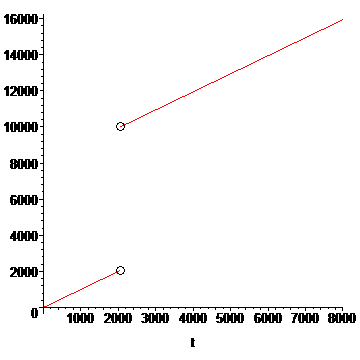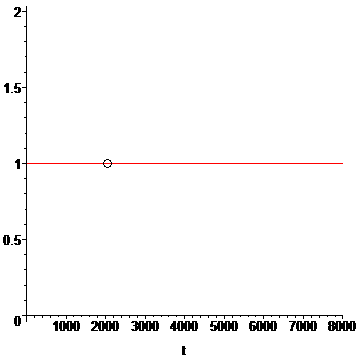
Herein I am attempting to explain how certain aspects related to resurrection according to the classical Christian view, can be further expanded and clarified using some elementary mathematics, based on an analysis of the time function during general anesthesia. Where appropriate, I will quote from the Bible, to make things clear.
The key Bible passage here is Hebrews 9:27: "And as it is appointed unto men once to die, but after this the judgment". Although Hebrews 9:27 basically settles the question of reincarnation in a negative way, many believers have problems understanding the physical part of what happens after death.
Paul attempts to define the resurrected body in 1 Corinthians 15:35-54: "42: So will it be with the resurrection of the dead. The body that is sown is perishable, it is raised imperishable; 43: it is sown in dishonor, it is raised in glory; it is sown in weakness, it is raised in power; 44: it is sown a natural body, it is raised a spiritual body..."
If the body is resurrected, we may assume that it has a consciousness similar to our current body. It is a reasonable assumption that the resurrected body has a consciousness, otherwise judgment cannot affect that which neither remembers nor understands that for which it is being judged for. (Ecclesiastes 12:14 "For God will bring every deed into judgment, including every hidden thing, whether it is good or evil.")
Let us therefore summarize the above two assumptions:
Assumptions 1 and 2 are reasonable provided we know God has the power to reverse engineer a human and that He keeps some sort of record for an individual's consciousness. (Luke 12:7: "Indeed, the very hairs of your head are all numbered. Don't be afraid; you are worth more than many sparrows.")
The main thesis of this article is that IF assumptions 1 and 2 hold, then the transition from prior to death consciousness to the resurrected body's consciousness is instantaneous.
The gist of the argument is the analogy which holds between death and the non-existence that a patient experiences under general anesthesia. The mathematical aspect of the analogy is given on the article Modelling Time Under General Anesthesia.
If general anesthesia occurs between the times t1 and t2, then the time between those times is totally undefined for the patient. Written in the words of my anesthesiologist: "When you undergo general anesthesia, the system completely shuts down. Barring the sustaining functions of the heart and related organs, the patient's state is very similar to non-existence/death".
It is therefore reasonable to assume that during general anesthesia, reality for the patient does not exist while his consciousness is suppressed. But we already know of another state when this will happen: DEATH.
The key issue on the above article now, for the patient undergoing general anesthesia, is HOW he perceives time: By looking at the first graph, it is obvious that the patient jumps from time t1=1 to t2=4. In other words, the in-between time (while he is unconscious) is never experienced at all. Instead, the patient experiences an "instantaneous transition" from the state PRIOR to losing consciousness, to the state where he has already awaken, after he has regained consciousness. If any of you ever had general anesthesia, you may remember this.
Of course, after general anesthesia consciousness is regained because the body is still objectively there. But here comes the crux: IF we assume that assumptions 1 and 2 above are satisfied, i.e., if God has resurrected your body, we have a similar situation, where consciousness can be "regained", because A body will be there! Your resurrected body after Christ!
For the sake of clarity then, let us assume that you die in 2050 AD and Christ resurrects your body in 10,000 AD. Here's the corresponding time function which describes your time:

External observers (i.e. your relatives) will perceive you as dead for exactly 7,950 years, which is exactly the time gap which you can measure along the y-axis. The good news, however, is that for you, those 7950 years will amount to an instantaneous singularity of infinitesimal length, because there is no consciousness during those years, in an exactly similar way to what happens under general anesthesia. Se let us look at the RATE of time flow (the derivative of the function of time in the first graph):

Time flows at a constant rate of 1 hour/hour, except exactly AT the actual moment of death, at t=2050. At that EXACT moment, the function becomes undefined and the rate of time change shoots to infinity. But this is only a single point, and as such it has infinitesimal length.
To conclude with the main thesis: IF assumptions 1 and 2 hold, the transition between the state BEFORE your death and the state AFTER your death, is instantaneous. Therefore from the point of view of the person who undergoes death,... death does not exist!
Literally then, in the words of Jesus Himself: John 11:25: "Jesus said to her, "I am the resurrection and the life. He who believes in me will live, even though he dies".
Of course, needless to say the entire situation depends entirely on whether there might be some higher power who will be kindly inclined to resurrect you after you die. Absent such an entity, the singularity point above will be terminal and life will stop exactly there, with no hope of continuing.